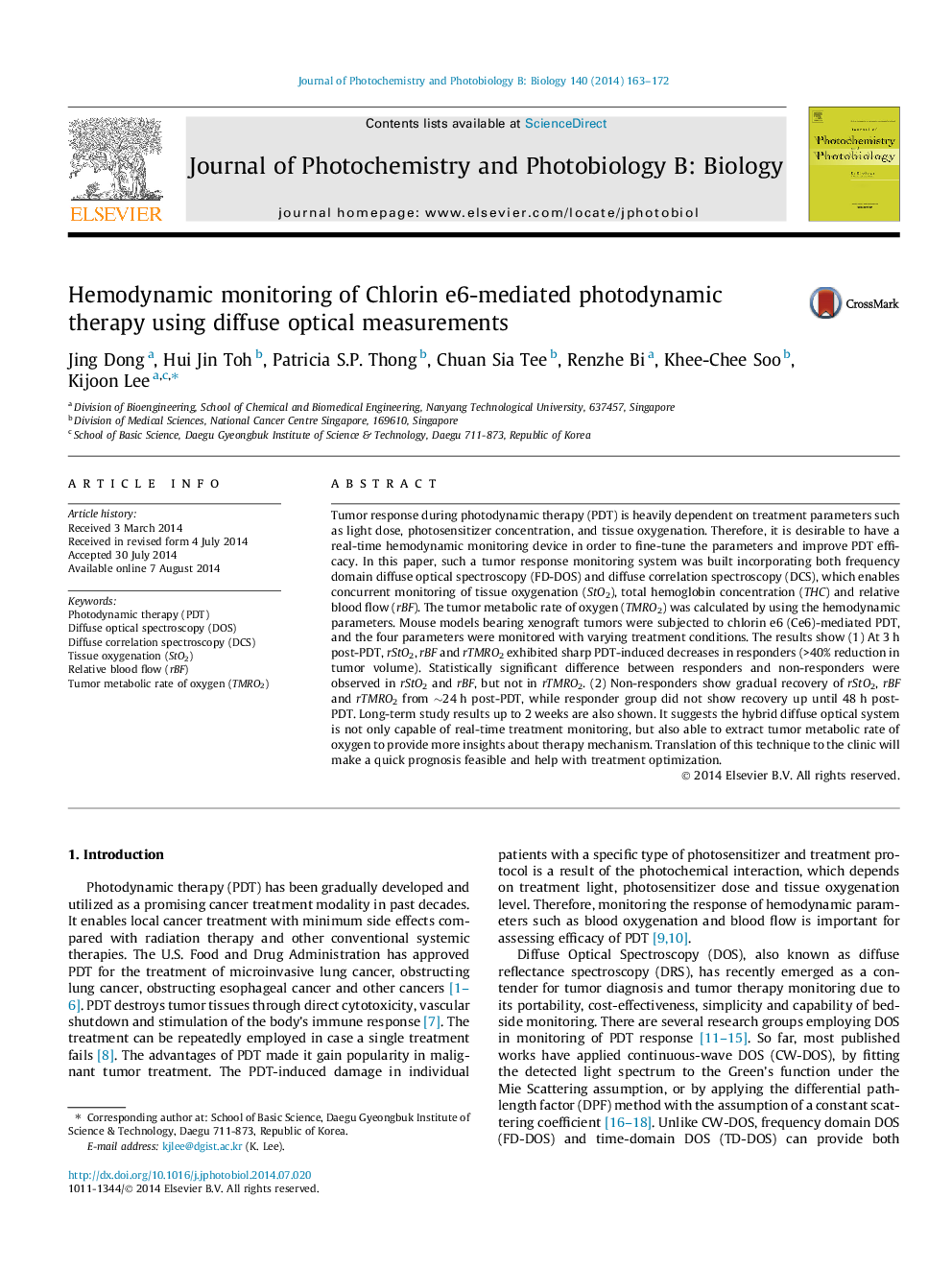| کد مقاله | کد نشریه | سال انتشار | مقاله انگلیسی | نسخه تمام متن |
|---|---|---|---|---|
| 29942 | 44448 | 2014 | 10 صفحه PDF | دانلود رایگان |

• Diffuse optical spectroscopy (DOS) was used to measure tumor hemodynamic variables.
• Diffuse correlation spectroscopy (DCS) was used to measure blood flow in tumor.
• Tumor metabolic rate of oxygen (TMRO2) was calculated from DCS and DOS.
• PDT responders showed sharp decrease of rStO2, rBF and rTMRO2 at 3-h after Ce6-based PDT.
• Diffuse optical probe can be used for real-time PDT treatment planning.
Tumor response during photodynamic therapy (PDT) is heavily dependent on treatment parameters such as light dose, photosensitizer concentration, and tissue oxygenation. Therefore, it is desirable to have a real-time hemodynamic monitoring device in order to fine-tune the parameters and improve PDT efficacy. In this paper, such a tumor response monitoring system was built incorporating both frequency domain diffuse optical spectroscopy (FD-DOS) and diffuse correlation spectroscopy (DCS), which enables concurrent monitoring of tissue oxygenation (StO2), total hemoglobin concentration (THC) and relative blood flow (rBF). The tumor metabolic rate of oxygen (TMRO2) was calculated by using the hemodynamic parameters. Mouse models bearing xenograft tumors were subjected to chlorin e6 (Ce6)-mediated PDT, and the four parameters were monitored with varying treatment conditions. The results show (1) At 3 h post-PDT, rStO2, rBF and rTMRO2 exhibited sharp PDT-induced decreases in responders (>40% reduction in tumor volume). Statistically significant difference between responders and non-responders were observed in rStO2 and rBF, but not in rTMRO2. (2) Non-responders show gradual recovery of rStO2, rBF and rTMRO2 from ∼24 h post-PDT, while responder group did not show recovery up until 48 h post-PDT. Long-term study results up to 2 weeks are also shown. It suggests the hybrid diffuse optical system is not only capable of real-time treatment monitoring, but also able to extract tumor metabolic rate of oxygen to provide more insights about therapy mechanism. Translation of this technique to the clinic will make a quick prognosis feasible and help with treatment optimization.
Journal: Journal of Photochemistry and Photobiology B: Biology - Volume 140, November 2014, Pages 163–172